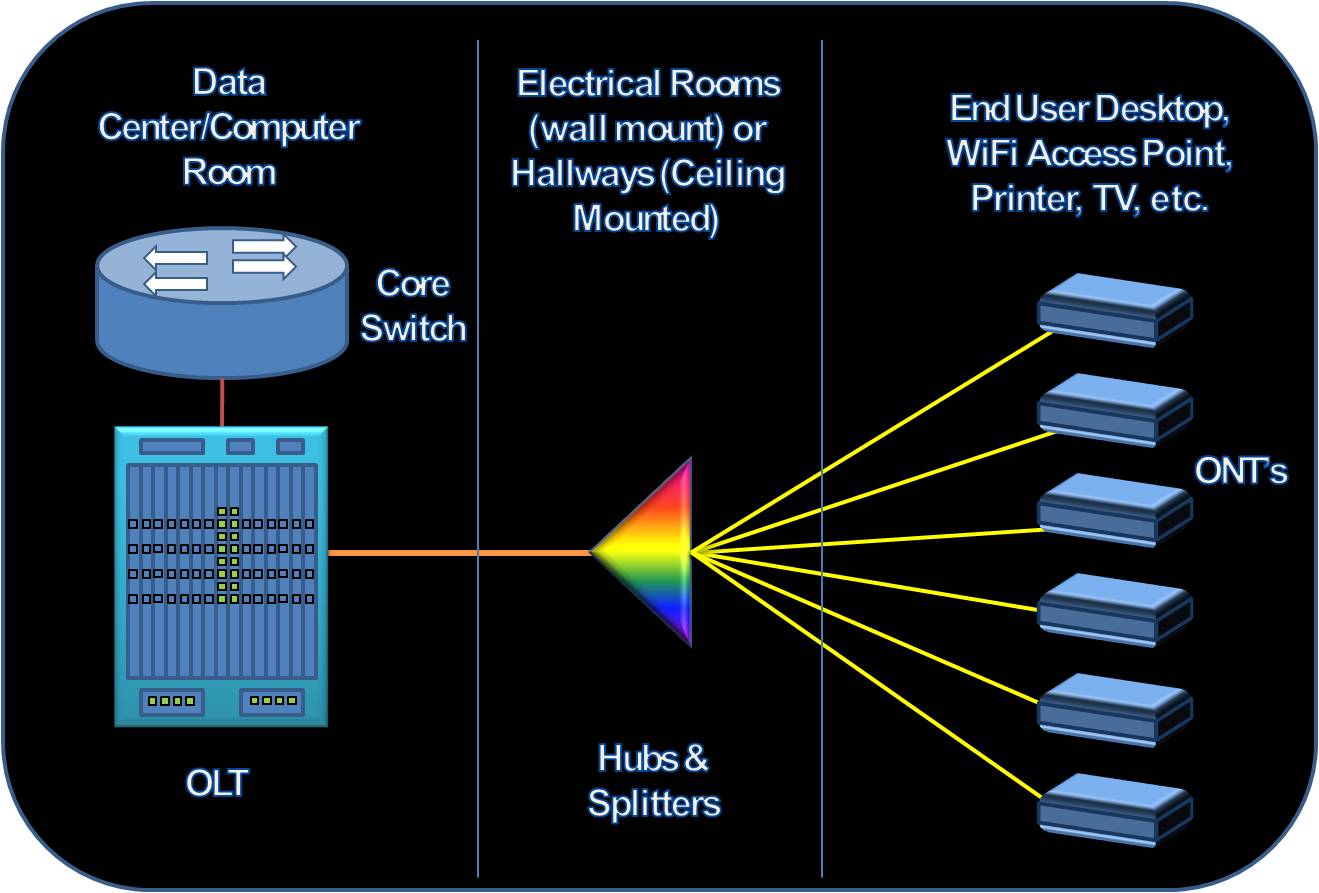
Introduction to Passive Optical LAN (POL)
Local Area Network (LAN) technology has evolved over the past 30 years to provide ever increasing bandwidth, security, and flexibility. The average enterprise LAN deployed today scales effectively and is considered very reliable if properly designed and maintained. What has not really changed much since we first began deploying switched architectures is the physical footprint of the topology and how it affects the design of buildings. While the various standards that have arose over the years have kept pace with business and government demands, we still continue to deploy these systems in the same manner:
A small closet (the telecommunications room or TR) is deployed near the end users so that a distance of roughly 300 feet is maintained on the copper cable connecting the end user information outlet to the TR. Within the TR, workgroup switches are deployed in equipment racks to connect the copper cable to the core network. The TR usually provides an uninterruptible power supply (UPS) to filter the power and provide battery back up in case the power goes out.
While this approach is straightforward and universally understood in the IT industry, it seems we have taken for granted the impact to the facilities which need to accomodate these TR's. To achieve the most efficient pathways between adjacent floors in a building, the TR's are often "stacked" so that the cabling can be passed from one TR to the next without being horizontally distributed. This approach often requires the space planners to design around the TR's and any requests to change the spaces around the TR are often limited with respect to door openings, room sizes, and egress routes. Furthermore, at least 80 to 150 square feet of valuable real estate is consumed with every TR. This problem is intensified when the floor plate of a building is large enough to require one or more TR's.
What if you could completely remove the workgroup switches? With no need for workgroup switches you could eliminate the cable patch panels, the equipment racks, the UPS, and perhaps even the supplemental HVAC to cool all that equipment. How might you achieve the same reliable LAN connectivity without all that expense and operational overhead?
The answer is to install a Passive Optical LAN (POL).
Search site:
Advertise here



